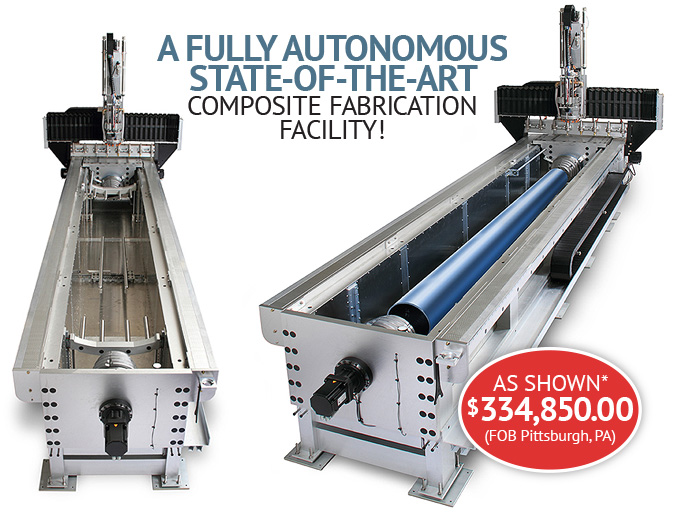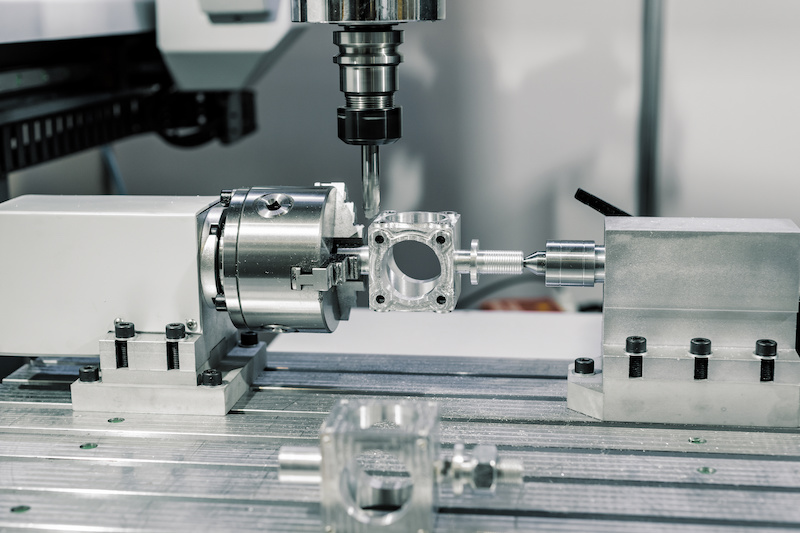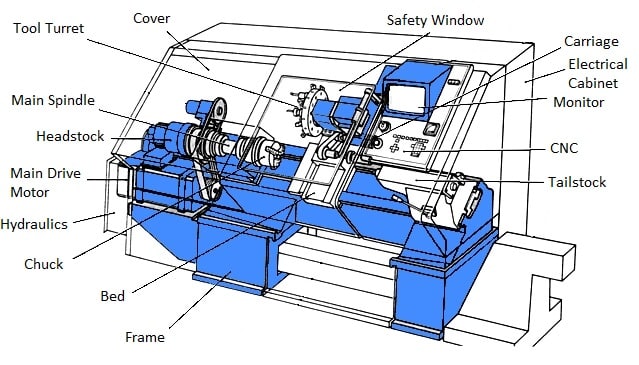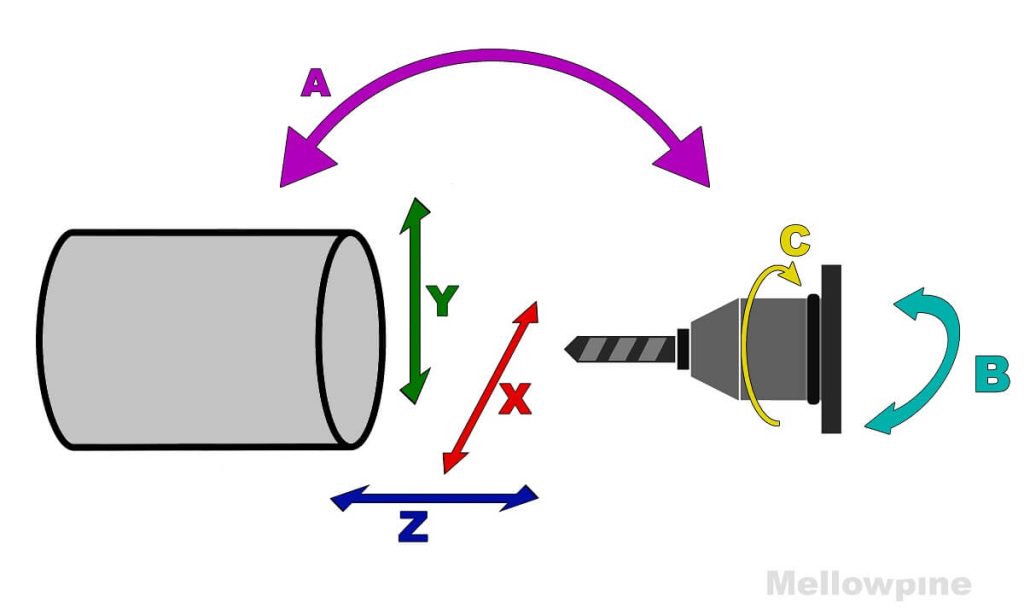Table of Contents
The world of manufacturing is constantly evolving, and the latest advancements in computer numerical control (CNC) technology have revolutionized the way we create products. One of the most intriguing questions in this field is whether a 4 axis CNC machine can replace a lathe. While lathes have been the go-to tool for turning cylindrical objects for centuries, 4 axis CNC machines offer a level of precision and automation that was previously impossible.
When it comes to manufacturing, speed, accuracy, and efficiency are key. Lathes have long been a staple in the industry, but the rise of 4 axis CNC machines has many experts wondering if these traditional tools will soon become obsolete. In this article, we’ll explore the capabilities of both machines, compare their strengths and weaknesses, and finally answer the question: can a 4 axis CNC replace a lathe?
Can a 4 Axis CNC Replace a Lathe?
When it comes to manufacturing precision parts, CNC machines have revolutionized the industry. However, many manufacturers still rely on traditional lathes to turn and shape materials. With the rise of 4-axis CNC machines, the question arises, can they replace lathes? In this article, we will explore the capabilities of a 4-axis CNC machine and compare it to a lathe.
What is a 4 Axis CNC Machine?
A 4-axis CNC machine is a computer-controlled machine that can move in four directions simultaneously. These machines can produce complex shapes and designs that are not possible with a traditional lathe. The fourth axis refers to the rotary axis, which allows the machine to rotate the material while it is being cut. This feature allows the machine to produce intricate parts with multiple curves and angles.
Advantages of a 4 Axis CNC Machine
One of the biggest advantages of a 4-axis CNC machine is its ability to produce complex parts quickly and accurately. These machines are equipped with high-speed spindles and cutting tools that can cut through materials with precision. Additionally, the rotary axis allows the machine to produce parts with multiple curves and angles that are not possible with a lathe.
Another advantage of a 4-axis CNC machine is its versatility. These machines can work with a variety of materials, including metals, plastics, and composites. They can also produce parts in a range of sizes, from small intricate parts to large pieces.
Disadvantages of a 4 Axis CNC Machine
One disadvantage of a 4-axis CNC machine is its cost. These machines are typically more expensive than traditional lathes, making them less accessible for smaller businesses. Additionally, the programming and setup of a 4-axis CNC machine can be more complex than a lathe, requiring skilled operators and programmers.
Another potential disadvantage is the limitation of materials. While a 4-axis CNC machine can work with a variety of materials, it may not be suitable for all applications. For example, certain materials may require specialized cutting tools or processes that are not possible with a 4-axis CNC machine.
4 Axis CNC vs Lathe
When comparing a 4-axis CNC machine to a lathe, there are a few key differences. A lathe is typically used for turning and shaping materials, while a 4-axis CNC machine can produce more complex shapes and designs. Additionally, a lathe is limited to cylindrical shapes, while a 4-axis CNC machine can produce parts with multiple curves and angles.
Another difference is the level of automation. A 4-axis CNC machine is fully automated, while a lathe requires manual operation. This means that a 4-axis CNC machine can produce parts more quickly and accurately than a lathe.
Benefits of a 4 Axis CNC Machine
The benefits of a 4-axis CNC machine include increased efficiency, accuracy, and versatility. These machines can produce complex parts quickly and accurately, reducing the need for manual labor. Additionally, they can work with a variety of materials and produce parts in a range of sizes, making them a versatile tool for manufacturers.
Another benefit is the ability to produce custom parts. With a 4-axis CNC machine, manufacturers can create unique parts that meet specific design requirements. This allows for greater flexibility and customization in the manufacturing process.
Conclusion
In conclusion, while a 4-axis CNC machine can produce complex parts with multiple curves and angles, it may not be a suitable replacement for a lathe in all applications. While the cost and complexity of a 4-axis CNC machine may be a barrier for some manufacturers, the benefits of increased efficiency, accuracy, and versatility make it a valuable tool for those who can afford it. Ultimately, the decision to use a 4-axis CNC machine or a lathe will depend on the specific needs of the manufacturer and the materials and parts they are working with.
Frequently Asked Questions
In this section, we will answer some commonly asked questions about whether a 4 axis CNC can replace a lathe.
Can a 4 Axis CNC replace a lathe?
A 4 axis CNC machine can perform many of the same functions as a lathe, such as turning and facing operations. However, there are some limitations to what a 4 axis CNC machine can do that a lathe can handle with ease. For example, a lathe can perform deep cuts and heavy-duty threading operations that a 4 axis CNC machine may struggle with.
Additionally, a lathe is generally more precise than a 4 axis CNC machine when it comes to certain types of work. Therefore, while a 4 axis CNC machine can replace a lathe in some instances, it is not a complete replacement for all of the functions that a lathe can perform.
What are the advantages of using a 4 Axis CNC over a lathe?
One of the main advantages of using a 4 axis CNC machine over a lathe is the versatility that it offers. A 4 axis CNC machine can perform a wide range of operations, including milling, drilling, and cutting, in addition to turning and facing. This means that you can use a 4 axis CNC machine to produce a wider variety of parts than you can with a lathe.
Another advantage of using a 4 axis CNC machine is the level of precision that it offers. With a 4 axis CNC machine, you can program the exact dimensions and specifications of a part, and the machine will produce it with a high degree of accuracy. This is not always possible with a lathe, which may require more manual adjustments to achieve the desired outcome.
What are the disadvantages of using a 4 Axis CNC over a lathe?
One of the main disadvantages of using a 4 axis CNC machine over a lathe is the cost. 4 axis CNC machines are generally more expensive than lathes, which can make them prohibitive for some businesses or individuals. Additionally, 4 axis CNC machines may require more training and expertise to operate effectively, which can add to the overall cost of using one.
Another disadvantage of using a 4 axis CNC machine over a lathe is the learning curve involved. While a lathe may be easier to learn and use for some individuals, a 4 axis CNC machine can require more time and effort to master. This can be a challenge for businesses or individuals that need to produce parts quickly or on a tight deadline.
How do I decide whether to use a 4 Axis CNC or a lathe?
The decision to use a 4 axis CNC machine or a lathe depends on several factors, including the type of parts that you need to produce, the level of precision that you require, and your budget. If you need to produce a wide range of parts with a high degree of accuracy, a 4 axis CNC machine may be the better choice. However, if you primarily need to perform turning and facing operations, and cost is a concern, a lathe may be the better choice.
Ultimately, the best way to decide whether to use a 4 axis CNC machine or a lathe is to consult with an expert in the field. They can help you evaluate your needs and determine which type of machine will best meet your requirements.
Can a 4 Axis CNC be used in conjunction with a lathe?
Yes, a 4 axis CNC machine can be used in conjunction with a lathe to produce complex parts that require multiple operations. For example, you could use a lathe to perform turning and facing operations, and then transfer the part to a 4 axis CNC machine to perform additional operations such as drilling and milling. This can help you achieve the desired level of precision and accuracy while also taking advantage of the versatility of a 4 axis CNC machine.
Additionally, using a 4 axis CNC machine in conjunction with a lathe can help you reduce the overall production time for a part, as you can perform multiple operations on different machines simultaneously. This can be especially beneficial for businesses that need to produce parts quickly and efficiently.
In conclusion, the question of whether a 4-axis CNC can replace a lathe ultimately depends on the specific needs of the user. While a 4-axis CNC machine offers a range of capabilities and advantages, it may not be the best choice for all applications.
Firstly, a 4-axis CNC can provide greater precision and flexibility than a lathe, making it ideal for complex, multi-dimensional projects. With the ability to rotate the workpiece on multiple axes, a 4-axis CNC can create intricate designs and shapes that would be difficult or impossible to achieve with a lathe.
Secondly, a 4-axis CNC can also increase production efficiency, as it can often complete tasks more quickly and with greater accuracy than a lathe. This can be particularly beneficial for larger-scale projects or those with tight deadlines.
However, it’s important to consider that a 4-axis CNC machine can be more expensive and complex to operate than a lathe. Additionally, lathe machines may be more suitable for certain projects, such as those that require high-speed rotation or a specific type of cutting tool.
In summary, while a 4-axis CNC machine can offer many benefits over a lathe, it’s important for users to carefully consider their specific needs and project requirements before deciding which machine to use.
Request a quote today!
[contact-form-7 id="1578" title="Contact form"]
Please compress the file into a ZIP or RAR file before uploading. Alternatively, send through your RFQ by email.
enquires@unitymanufacture.com





